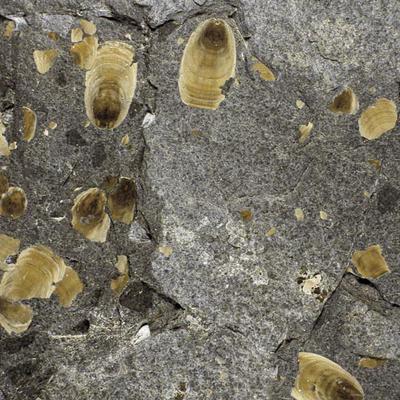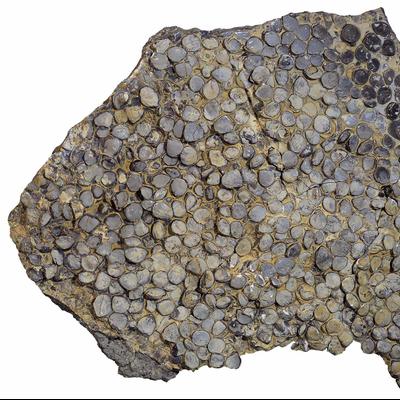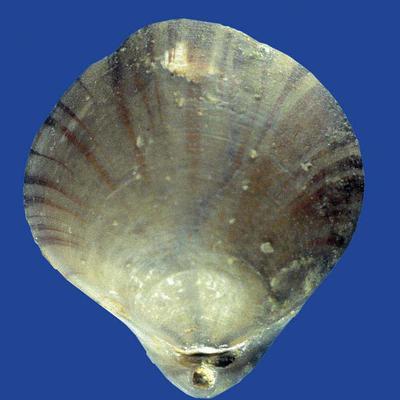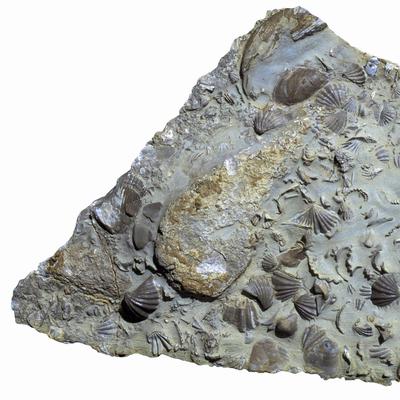The trivial names are deceiving – their similarity with a Roman oil lamp accounts for the wrong assignment of terebratulid brachiopods to clams and mussels. But brachiopods are no mollusks at all, but bivalved sea creatures with tentacles that belong to a separate phylum. Their ventral and dorsal valves are opened and closed by a complicated system of muscles. Brachiopods without hinges (the former Inarticulata, now Linguliformea) have phosphatic shells and live within muddy seafloors or as epizoans. Brachiopods with hinges (formerly Articulata, now Rhynchonelliformea) have calcitic shells and live attached by a flexible stem. Compared to the Tethyan Triassic the brachiopod diversity of the Muschelkalk is very low. However, the few Muschelkalk species can be extremely abundant in certain shell beds. The small microconch posthorn tubes are distantly related to brachiopods.
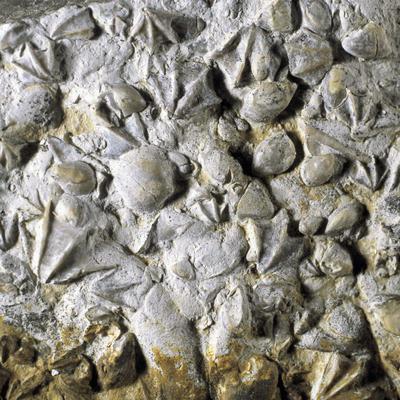
Tetractinella trigonella is a common brachiopod in the Anisian of the Tethys. In the Lower Muschelkalk its occurrence is restricted to South Poland, in the Upper Muschelkalk to a unique marker bed in the Trochitenkalk Formation of Germany, the ‘Tetractinellabank’. The picture shows Tetractinella trigonella from the Upper Silesian Gorasdze Formation.
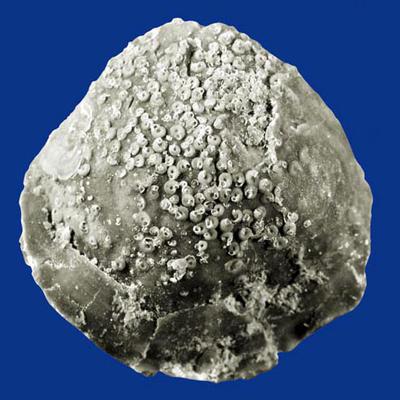
The small posthorn tubes have long been misinterpreted as serpulid worm tubes. Now, their shell mineralogy made clear that they belong to the extinct microconchs, which are distantly related to the brachiopods. Microconchus valvatus with its spiral tubes lived attached to all kinds of shells, here to a terebratulid shell.

